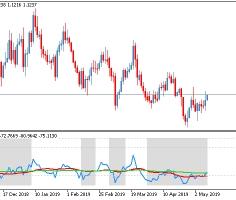Content

All assets (required amount of stable funding) and liabilities (available amount of stable funding) are weighted according to their likelihood of being on the balance sheet over the next 12 months. Japan’s prolonged low interest rate environment helps to support debt servicing capacity of its borrower, leading to a healthy system gross nonperforming loans (NPLs) of 0.9% in 2019. It simply refers to the number of lines covered by tests divided by the total number of lines. You could have 100% line coverage and still have scenarios that aren’t tested, because of conditional branching (e.g. if statements) inside your code.
DtD represents the difference between the market value of assets and the default point, divided by asset market value multiplied for assets’ volatility. We gather from Bloomberg Professional Services the one-year default probability (PD). Then, we calculate the DtD by inverse cumulative distribution function of the PD. The assumptions are provided by the regulatory authorities based upon a combined market and idiosyncratic stress, which incorporates many of the shocks experienced during the financial crisis. Banks are expected to conduct their own stress tests to assess the level of liquidity they should hold beyond this minimum, and construct their own scenarios that could cause difficulties for their specific business activities. By itself, this metric is not the perfect measure of asset quality as high rates of loans growth can mask asset quality problems.
- This is one of the most important measurements in QA since it’s directly tied to the performance of your QA strategy.
- Nevertheless, it shows a positive and statistically significant relationship with both the Z-score and the distance to default.
- If a bank has a higher score, it is more likely to be subject to more examinations.
- With respect to performance variables, instead, the total capital ratio shows a positive and statistically significant relationship with all the measures employed which is further confirmed for the crisis period, as regards ROA and PBR.
Conversely, banks with higher capital buffers adjust their capital levels slower and increase both capital and risk. As an implication, well-capitalized banks are flexible enough to expand risks for future growth whenever valuable opportunities materialize. Some works support indeed a positive relationship between bank capital and bank risk-taking [43, 62, 71, 84, 88], whereas others support the opposite [20, 31, 68]. In particular, a higher capital base incentivizes a better risk monitoring and screening by banks managers as it reduces bank liability and bailout expectations [37].
Do CAMELS Ratings Apply to Credit Unions?
Prior to the global financial crisis (“GFC”), the capital markets were buoyant and funding was readily available at low cost. The rapid reversal in market conditions illustrated how quickly liquidity can evaporate and that illiquidity can last for an extended period of time. Supervisors assess banks’ risks to capital every year as part of the supervisory review and evaluation process (SREP).
We make this division based on the safety and soundness ratings of banks made by bank supervisors. Banks receive a 1 through 5 rating under this system, with 1 reserved for the banks in the best condition and 5 for banks in the worst. Supervisors consider a bank receiving a 1 or 2 rating to be in satisfactory condition, while banks with a 3, 4 or 5 are in less than satisfactory condition. (By definition, this excludes banks that previously failed or merged, but we think this will not materially bias our results, as only a small number of banks fall into this group.) We then review these two groups’ Texas ratios over time.
Asset Quality definition
We then consider banks’ financial stability measures and choose the Z-score, an accounting-based measure, as first variable. Proposed initially by Roy [83], the Z-score is a spread measure able to provide information regarding the stability of banks [13, 30, 67]. Indeed, it mirrors the level of standard deviations by which ROA has to deviate from its average value to suppress the Equity value of the bank [28].

Similarly, the LLP ratio enters significantly and negatively for banks in the lowest percentile considered of the distribution and its effect decreases for higher percentiles. The coverage ratio, instead, enters significantly and positively for banks positioned in the highest percentile of the distance-to-default distribution. This result suggests a poor role for the coverage ratio as failure predictor. The liquidity measure enters significantly and negatively for banks with lower values of the distance to default and its effect maintains across all the percentiles of the distribution but slightly increasing. The same effect and magnitude trend is presented by the funding measure in line with baseline results. As regards control variables, Model 4 highlights the positive and statistically significant relationship between size and the Z-score which is again explained by the premises of TBTF theory as the larger the bank, the higher the probability to be rescued by the government in case of crisis.
What Are Quality Assurance Metrics?
However, many companies don’t actively track their progress (or lack thereof) when it comes to quality improvements, which threatens to make the whole effort futile. If we accept that we can’t asset quality improve what we don’t measure, then QA metrics become crucial to improving quality in our organizations. A rating of 1 is considered the best, and a rating of 5 is considered the worst.

Conversely, if the market favours banks with a higher level of loans for a given level of deposit, we expect a positive sign with bank performance variables and a negative sign between the ratio and the bank risk variables. As regards the measure of financial structure, we consider the ratio between short-term debt and total liabilities. Banks that are dependent on short-term debt are more vulnerable to liquidity shocks and subtend a higher level of risk. Thus, we expect a positive relationship with our risk variables and a negative one with performance measures.
Second, the share of banks with higher ratios started to decline in 2010 and continued to decline into 2011, suggesting that conditions
have begun to stabilize. Finally, the ratio worsened at the same time that banking conditions worsened; the ratio did not seem to predict the crisis. Level 1 assets are the highest quality and most liquid marketable securities (e.g. cash, central bank reserves and marketable securities from central banks), and there is not limit to which a bank can meet these assts to meet the LCR. Level 2 assets (e.g. corporate bonds/ covered bonds rated at least AA-) are capped at 40% of HQLA. If the bank is not expected to honour its deposits, this trust would be eroded, leading banks’ funding sources could become much more expensive or even dry up. In an extreme scenario, this might cause a large sudden withdrawal of deposits (a bank run) could cause an actual failure and financial contagion across the economy prompting bank runs on fears that the bank may go bankrupt.
The Properties of Great QA Metrics
(iv) Introduced an international framework for mitigating excessive liquidity risk and maturity transformation through Liquidity Coverage Ratio (LCR) and Net Stable Funding Ratio (NSFR). As a matter of prudence, the definition of NPL includes loans that have are more than 90 days past due, foreclosed assets, restructured loans and loans that are not technically nonperforming but showing signs of weakness (e.g. special mention loans). But not all NPLs are equal – the definition of NPL may vary according to the jurisdiction that the bank operates in. The loan classification policies are more conservative in some countries compared with others. Defect distribution consists of measuring the number of detects or bugs according to different criteria. Those criteria include factors like severity, area of the application, or even the testing type.
The aim was to enhance the transparency of bank exposures by reviewing the quality of banks’ assets, including the adequacy of asset and collateral valuation and related provisions. What does the Texas ratio tell us about conditions of Ninth District banks (see Graph 1)? First, the vast majority of banks in the district had very low ratios during the 2000s.
Asset quality
Banks need to have enough assets on hand that can be easily converted into cash to maintain sufficient liquidity. In some cases, a bank that does not have enough liquidity could experience defaults and even bankruptcy. Examiners assess an institution’s sensitivity to market risk by monitoring the management of credit concentrations. In this way, examiners are able to see how lending to specific industries affects an institution. To assess a bank’s liquidity, examiners look at interest rate risk sensitivity, availability of assets that can easily be converted to cash, dependence on short-term volatile financial resources, and asset and liability management technical competence. This component rating is reflected by the management’s capability to point out, measure, look after, and control risks in the institution’s daily activities.

Regarding the former, we picked the ratio between gross loans to short-term funding and deposits. According to Chiaramonte and Casu [29], its relationship with risk variables can be interpreted in different ways. If the market perceives negatively banks with a lower level of deposits and liquidity, this aspect leads to an increase in equity risk.
Literature review
Using a sample of 63 European banks and quarterly data over the period 2005–2018, this paper investigates the relationship between capital and asset quality with bank risk and performance. As regards its relationship with equity betas, the LLP ratio shows a positive and statistically significant relationship for large banks which is coherent with baseline results and further supported by the same relationship between the coverage ratio and equity betas. The explanation still stems from the propensity of large banks to merely abide by provisioning rules. As second additional test, we check for eventual differences in the evolution of the relationships between asset quality and capital with bank risk and performance due to bank size.
